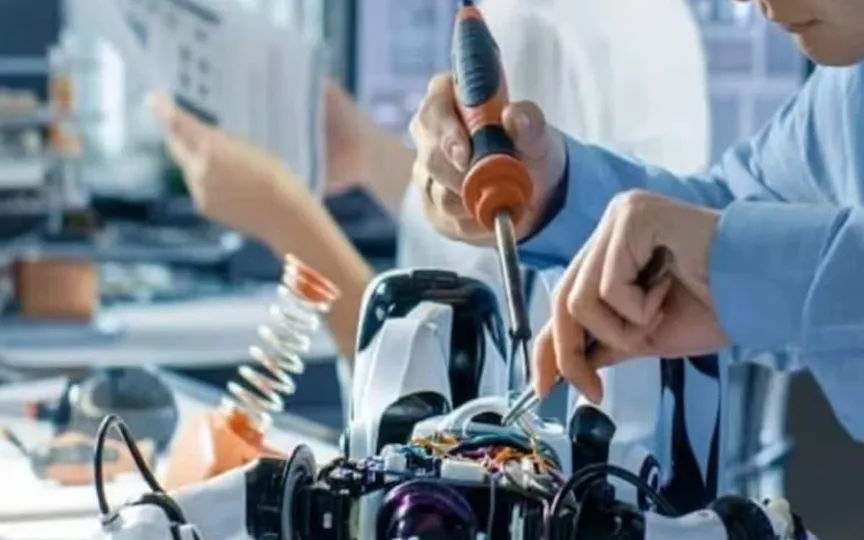National Robotics Strategy to Transform Industries, Balance Human Workforce & Automation
The Ministry of Electronics and IT has invited public comments on a draft national robotics strategy that is poised to revolutionize several sectors, utilizing cutting-edge technology to promote economic growth and improve quality of life.
The strategy, also known as the National Robotics Mission, encompasses a whole ecosystem approach involving industry, academia and start-ups. One of its overarching goals is to position India as a global leader in the development and deployment of robotics. This ambitious mission is in line with India’s larger vision of AI-enabled technologies in various sectors such as healthcare, agriculture, manufacturing and national security.
Impact on agriculture and the workforce
In the agricultural sector, which employs a significant portion of India’s workforce, robotics holds the promise of increasing productivity and addressing safety concerns. The national robotics strategy recognizes the need to find a “fine balance” between human work and automation. It recognizes that while automation can improve efficiency, it should also safeguard farmers’ well-being. The occupational hazards of traditional agriculture, such as diseases of the musculoskeletal system and exposure to harmful chemicals, highlight the need for modernization and improved safety measures.
“On the basis of this momentum, robot automation can be started in the agricultural sector, with the aim of maximizing productivity and addressing security risks to farmers’ well-being,” the draft suggests. Possible use cases include searching for crops and spot spraying robots. These robots can help detect pest attacks and diseases early, prevent crop damage and minimize the need for manual labor.
National security and technological excellence
India’s defense sector, one of the largest in the world, faces challenges in border surveillance and real-time intelligence gathering. The strategy recognizes the importance of technological excellence in maintaining national security. In this case, the draft proposes the use of robotic automation to solve these challenges.
The “Sapper Scout” UGV (Unmanned Ground Vehicle) for mine detection has been highlighted as an example of the potential of robotics in defence. It can detect and mark mines, reducing the risks to personnel. Surveillance robots are also mentioned as tools for improving border security.
Balancing automation and human labor in the workforce
The national robotics strategy emphasizes the need for the “ethical use” of robotics technology. The draft says that while automation can bring many benefits, it must be implemented with respect for human rights and in a fair and transparent manner. Finding the right balance between automation and labor is a key theme in the entire strategy.
To ensure this balance, the strategy outlines several key focus areas. These include creating job opportunities in emerging robotics fields to accommodate displaced workers, upskilling and retraining initiatives to address the shortage of specially trained technicians, and strengthening standards and certification to ensure the quality and reliability of robotics technologies.
Ecosystem Acceptance
In order to promote the introduction of robotic technology, targeted demand-side interventions are proposed. These include public procurement policy to encourage domestic production and technology deployment plans to identify and promote priority use cases. In addition, financial incentives, international immersion programs and capacity building projects are recommended to nurture the country’s robotics ecosystem.
In addition, according to the draft, a new independent agency under the Ministry of IT, the Robotics Innovation Unit (RIU), will be responsible for the implementation of the national robotics strategy. The goal is to create a robotics ecosystem that promotes innovation, supports technology development and adoption by involving industry, SMEs, start-ups, individual innovators, research and development institutes, universities and government organizations.
Overall, the strategy recognizes the potential benefits of robotics technology and emphasizes the importance of ethical use, safety and the well-being of Indians. As India develops its robotics ecosystem, it aims to position itself as a global leader in intelligent cyber-physical systems, ushering in a new era of technological innovation and economic growth.




